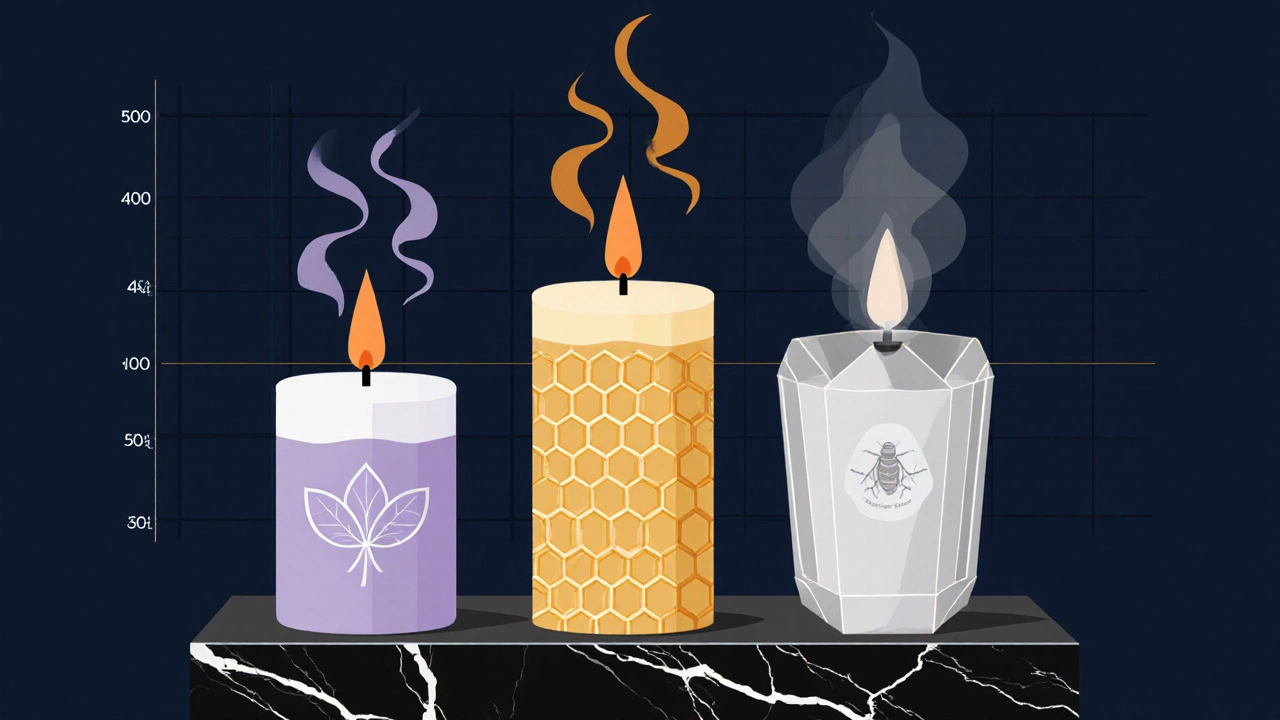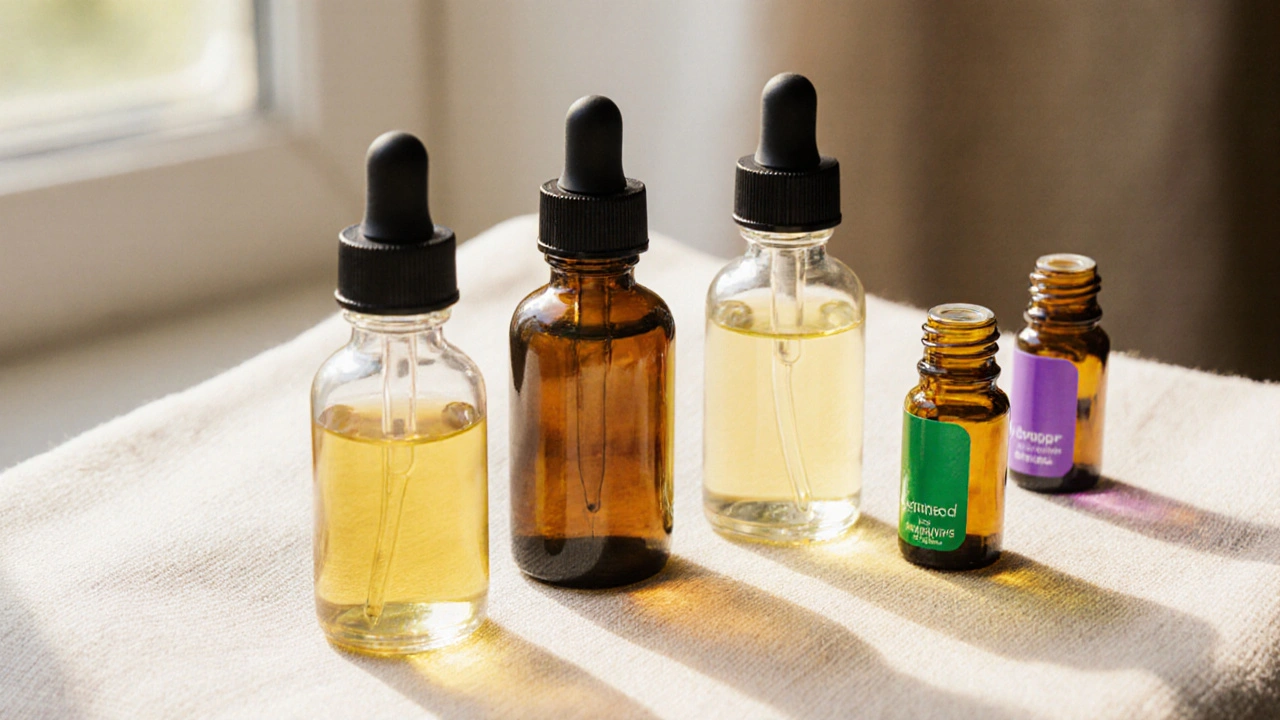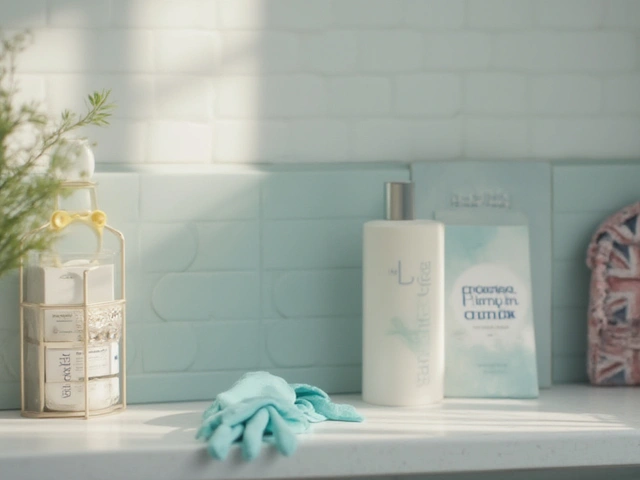Massage Oil & Candle Matcher
Enter your preferences above and click "Find My Perfect Match" to get personalized recommendations for massage oil and candle pairing.
Finding the perfect massage oil or candle can feel like hunting for a needle in a haystack, especially when you’re new to sensual massage. The right combo not only makes the skin glide smoothly, but it also sets the mood, eases tension, and turns a simple touch into a memorable experience. Below is a no‑fluff guide that walks you through the key things to consider, from the chemistry of carrier oils to the burn characteristics of candle wax.
Quick Take
- Pick a carrier oil that matches your skin type - light for oily, richer for dry.
- Choose essential oils based on the vibe you want: lavender for calm, citrus for energy.
- When buying a massage candle, look at wax type (soy > beeswax > paraffin) and burn time.
- Always test for allergies on a small skin patch before a full session.
- Pair oils and candles that complement each other’s scent profile for a seamless aroma.
Understanding the Basics
Massage oil is a blend of carrier and essential oils used to lubricate skin during massage. The carrier oil carries the fragrance and nutrients, while the essential oil adds therapeutic benefits and scent. A massage candle is a scented candle formulated to melt into a skin‑safe oil when lit. The wax melts at a low temperature, creating a warm, fragrant glide.
Both products share three core attributes: texture, scent, and skin compatibility. When these line up, the massage feels smoother and the ambiance stays consistent.
Carrier Oils: The Foundation
The carrier oil determines how quickly the skin absorbs the blend and how slippery it feels. Here are the most common options:
- Sweet Almond Oil - Light, non‑greasy, great for most skin types. High in vitaminE, it also offers mild antioxidant protection.
- Jojoba Oil - Technically a liquid wax, it mimics the skin’s natural sebum. Ideal for oily or acne‑prone skin.
- Coconut Oil - Gives a richer feel and a subtle tropical scent. Not recommended for those with coconut allergies.
- Grapeseed Oil - Very light, quick‑absorbing, and has a neutral scent. Perfect for a “no‑fragrance” base.
- Olive Oil - Heavier, best for dry or mature skin. Provides deep nourishment but can feel a bit tacky.
Tip: Blend two carriers (e.g., almond + jojoba) to balance texture and skin‑friendliness.
Essential Oils: Scent and Mood
Essential oils are the aromatherapy component. They sit on top of the carrier and interact with the brain’s limbic system. Choose based on the vibe you’re aiming for:
- Lavender is a calming oil that helps reduce anxiety and promotes relaxation. Perfect for bedtime or stress relief.
- Ylang‑Ylang is an aphrodisiac scent that can boost intimacy and lower blood pressure.
- Peppermint is an invigorating oil that relieves muscle tension and improves circulation.
- Geranium - balances hormones and adds a sweet, rose‑like aroma.
- Sweet Orange - bright, uplifting, and good for mood elevation.
Safety note: Never use essential oils undiluted. A typical dilution ratio is 2-3drops of essential oil per tablespoon (≈15ml) of carrier.
Choosing the Right Massage Candle
Massage candles differ from regular candles in three key ways: wax type, fragrance concentration, and melt point. The ideal candle should melt into a skin‑safe oil without overheating the skin.
- Wax Type - Soy wax is a plant‑based wax that burns cleanly and melts at a low temperature. It’s the most skin‑friendly and eco‑conscious choice.
- Beeswax - natural, slightly higher melt point, adds a subtle honey scent.
- Paraffin - inexpensive but can produce more soot and may contain additives.
When picking a candle, read the label for "massage‑grade" or "skin‑safe" claims. Some brands blend soy wax with carrier oils (like almond or jojoba) so the melted wax is already lubricated.

Wax Types & Burn Characteristics
| Wax Type | Burn Temp (°C) | Smoke Level | Skin Compatibility | Average Burn Time (hrs) |
|---|---|---|---|---|
| Soy | 45‑55 | Low | High | 30‑40 |
| Beeswax | 62‑68 | Very Low | High | 25‑35 |
| Paraffin | 70‑80 | Medium | Moderate | 20‑30 |
For beginners, soy‑based candles are the safest bet because of their low melt point and clean burn.
Safety & Skin Sensitivity
Allergy testing is a must. Here’s a quick patch‑test routine:
- Mix a tiny amount of your chosen oil blend (about 1ml) with a carrier.
- Apply a dot to the inside of your forearm.
- Wait 24hours; look for redness, itching, or swelling.
If any reaction occurs, dilute further or swap out the offending essential oil. Also, keep candle temperature below 45°C to avoid burns. When a candle is lit, let it melt for 5-7minutes before pouring the oil onto the skin.
Putting It All Together: Pairing Oils & Candles
Think of the pairing like a perfume: the base (carrier), heart (essential oil), and accent (candle fragrance) should complement each other.
| Mood Goal | Carrier + Essential Oil Blend | Recommended Candle |
|---|---|---|
| Relaxation | Almond + Lavender (2% dilution) | Soy candle with vanilla‑lavender scent |
| Energy Boost | Grapeseed + Peppermint (3% dilution) | Soy candle with citrus‑mint blend |
| Intimacy | Jojoba + Ylang‑Ylang (2.5% dilution) | Beeswax candle with sandalwood‑rose aroma |
Adjust the fragrance strength of the candle to match the oil’s scent. If the candle is overpowering, use a milder carrier or reduce essential oil drops.
Pro Tips & Common Mistakes
- Don’t over‑heat the oil. A few seconds of gentle warming is enough; hotter oil can damage skin proteins.
- Store oils away from sunlight. Light breaks down essential oils, shortening shelf life.
- Use glass containers. Plastic can leach chemicals into the oil, especially with warm temperatures.
- Avoid scented candles with synthetic fragrances. They can cause irritation when the melted wax contacts skin.
- Mix fresh batches. Oils can separate over time; a quick stir before each use keeps the blend uniform.
Next Steps & Troubleshooting
If you’ve followed the guide but still notice stickiness or an unpleasant scent, check these points:
- Is the carrier oil too heavy for the skin type?
- Did you exceed the recommended essential oil dilution?
- Is the candle wax leaving residual residues?
Swap one variable at a time - for example, try a lighter carrier while keeping the same essential oil. This method isolates the cause quickly.
Frequently Asked Questions
Can I use regular scented candles for massage?
Only if the candle is labeled "massage‑grade" or "skin‑safe". Regular candles often contain synthetic dyes and higher melt points that can irritate the skin.
How long can I keep a homemade oil blend?
Store it in a dark glass bottle and use within 6‑12 months. Essential oils oxidize faster in light and heat.
What’s the ideal temperature for pouring candle‑derived oil?
Aim for 40‑45°C (104‑113°F). Test with a fingertip; the oil should feel warm, not hot.
Are there any oils I should avoid for intimate massage?
Avoid heavily scented oils with high phenol content (like clove or oregano) as they can cause burning sensations on sensitive areas.
Can I reuse the melted wax from a massage candle?
Yes, as long as you strain out any debris and store it in a clean, airtight container. Re‑melt only a small batch each time to keep it fresh.






